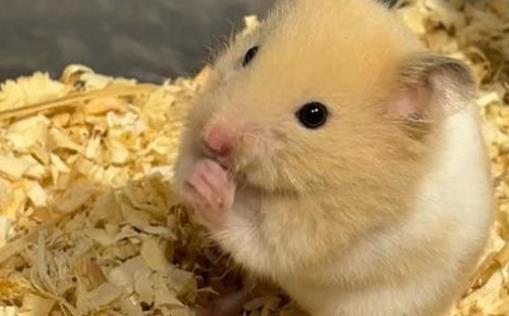Detailed Guide to Small-Sized Hamster Breeds
I. The Smallest Hamster Breed: Roborovski Hamsters (Robos)
Size: Adult Roborovskis measure only 4–5 cm in length and weigh 15–40 grams, making them the smallest hamster breed.

Appearance: They have grayish-yellow fur on their backs, snow-white bellies, round ears, and white "eyebrows"—a look that resembles a tiny "little old man."
Temperament: Shy, sensitive, and extremely agile. They easily get startled and run away, so they are better suited for observation rather than frequent interaction.
Care Notes: Use a cage with tight seals (gap size ≤1 cm) to prevent escape. Never house multiple Robos together—they have an extremely strong territorial instinct.
II. Dwarf Hamsters (Common Household Breeds)
1. Campbell’s Dwarf Hamsters (Three-Lined Hamsters)
Size: 8–11 cm in length, weighing 30–50 grams.
Key Traits: They have three dark stripes along their backs and a gentle temperament, making them ideal for beginners.
Varieties:
Purple Gray Hamsters: Deep gray fur and a calm personality.
Pudding Hamsters: Golden-yellow fur, lazy, and prone to obesity—strict diet control is required.
2. Winter White Russian Dwarf Hamsters
Size: 8–10 cm in length. Their fur turns white in winter, and they have a 温顺 (gentle) temperament.
3. Campbell’s Russian Dwarf Hamsters (One-Lined Hamsters)
Size: 8.5 cm in length, weighing 20–40 grams.
Key Traits: Come in a variety of coat colors (e.g., amber, albino), but have an unstable temperament and a relatively high tendency to bite.
III. Other Miniature Breeds
Chinese Hamsters (Striped Hamsters)
Size: Slender body (10–12 cm in length) with a relatively long tail (accounting for 1/3 of their body length).
Habits: Skilled climbers—require a tall cage or fully enclosed environment to prevent escape.
IV. Key Care Tips
Cage Selection
For dwarf hamsters: Use cages with small wire spacing (≤1 cm) to avoid escape.
For Roborovski hamsters: Provide a larger living space (a 60 cm basic cage is recommended).
Environment Management
Summer Heat Protection: Keep temperatures ≤28°C.
Winter Warmth: Thicken the bedding to retain heat.
For long-haired varieties: Regularly groom their fur to prevent matting.
Diet Control
Dwarf hamsters are prone to obesity—avoid high-sugar treats (e.g., offer fruits only 1–2 times a week).
V. Breed Selection Recommendations
For Beginners: Campbell’s dwarf hamsters (stable temperament) or Winter White Russian dwarf hamsters (gentle nature).
More Challenging Breeds: Campbell’s Russian dwarf hamsters (require patience for taming) or Roborovski hamsters (need meticulous care).
